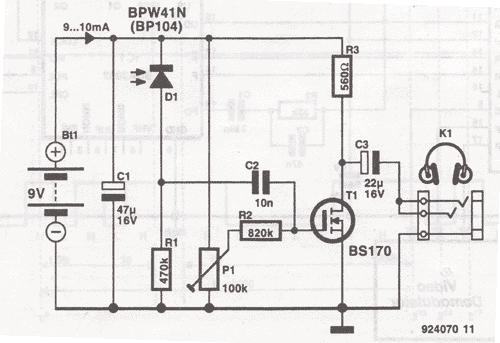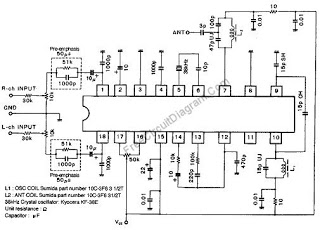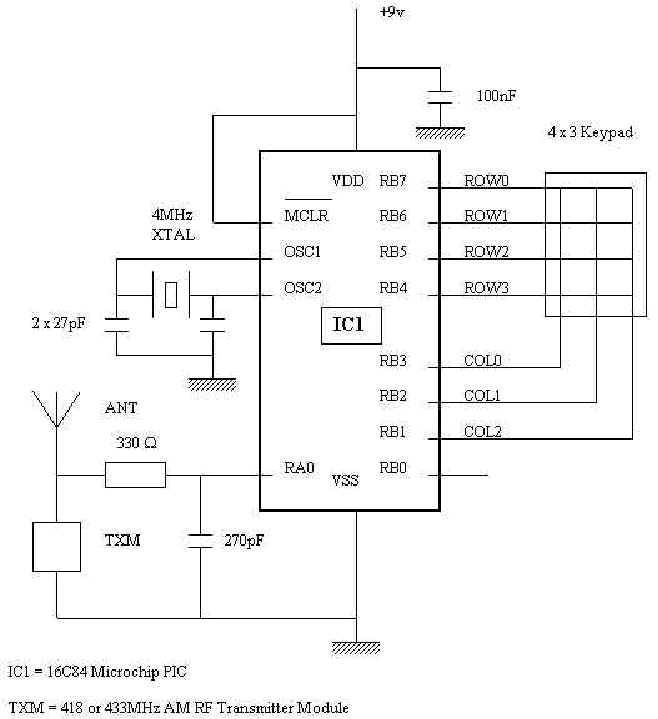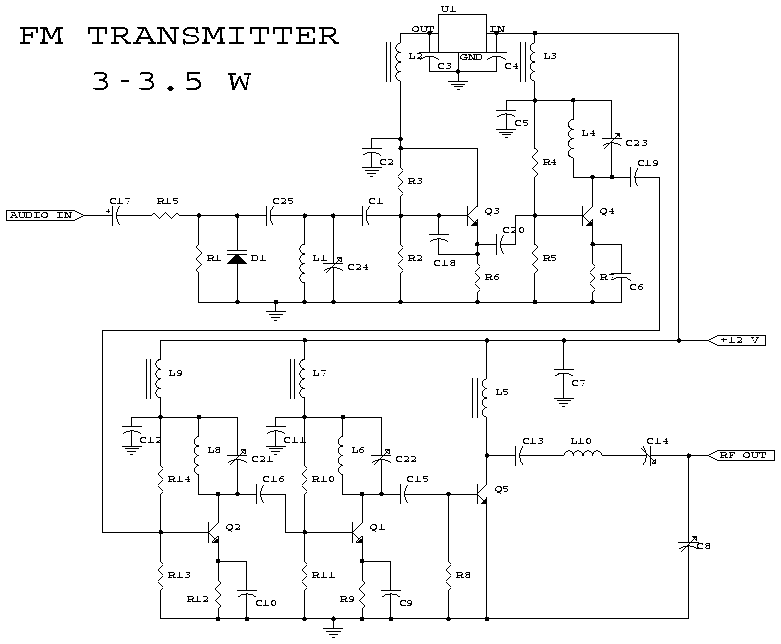
Differential TMP01 Temperature Sensor Transmitter
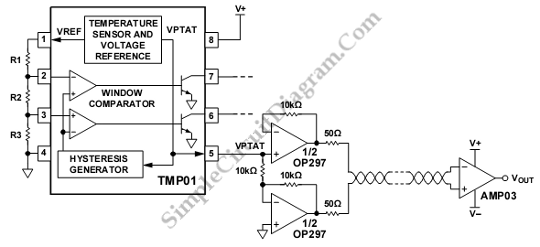
This is a TMP01 Temperature Sensor Transmitter circuit. This circuit is used in industrial environments to transmit the signal differentially on a wire pair.
The TMP01 Temperature Sensor Transmitter circuit is designed to provide accurate temperature measurements in industrial settings, where environmental conditions can vary significantly. The TMP01 sensor operates by detecting temperature changes and converting these changes into a differential voltage signal that can be transmitted over a twisted pair of wires. This differential signaling helps to minimize the effects of electrical noise, which is crucial in industrial applications where electromagnetic interference (EMI) may be present.
The circuit typically includes the TMP01 sensor, which is integrated with operational amplifiers to condition the output signal. The output can be configured for different voltage levels depending on the specific requirements of the application, ensuring compatibility with various data acquisition systems. The use of a differential output allows for longer cable runs without significant signal degradation, making the circuit suitable for remote temperature monitoring.
In addition to the TMP01 sensor, the circuit may incorporate additional components such as resistors, capacitors, and possibly a microcontroller for processing and communication purposes. Proper PCB layout techniques should be employed to reduce parasitic capacitance and inductance, which can adversely affect the performance of the circuit.
Overall, the TMP01 Temperature Sensor Transmitter circuit is an effective solution for accurate temperature measurement and transmission in challenging industrial environments, ensuring reliable performance and data integrity.This is a TMP01 Temperature Sensor Transmitter circuit. This circuit is used in industrial environments to transmit the signal differentially on a wire pair.. 🔗 External reference
The TMP01 Temperature Sensor Transmitter circuit is designed to provide accurate temperature measurements in industrial settings, where environmental conditions can vary significantly. The TMP01 sensor operates by detecting temperature changes and converting these changes into a differential voltage signal that can be transmitted over a twisted pair of wires. This differential signaling helps to minimize the effects of electrical noise, which is crucial in industrial applications where electromagnetic interference (EMI) may be present.
The circuit typically includes the TMP01 sensor, which is integrated with operational amplifiers to condition the output signal. The output can be configured for different voltage levels depending on the specific requirements of the application, ensuring compatibility with various data acquisition systems. The use of a differential output allows for longer cable runs without significant signal degradation, making the circuit suitable for remote temperature monitoring.
In addition to the TMP01 sensor, the circuit may incorporate additional components such as resistors, capacitors, and possibly a microcontroller for processing and communication purposes. Proper PCB layout techniques should be employed to reduce parasitic capacitance and inductance, which can adversely affect the performance of the circuit.
Overall, the TMP01 Temperature Sensor Transmitter circuit is an effective solution for accurate temperature measurement and transmission in challenging industrial environments, ensuring reliable performance and data integrity.This is a TMP01 Temperature Sensor Transmitter circuit. This circuit is used in industrial environments to transmit the signal differentially on a wire pair.. 🔗 External reference

